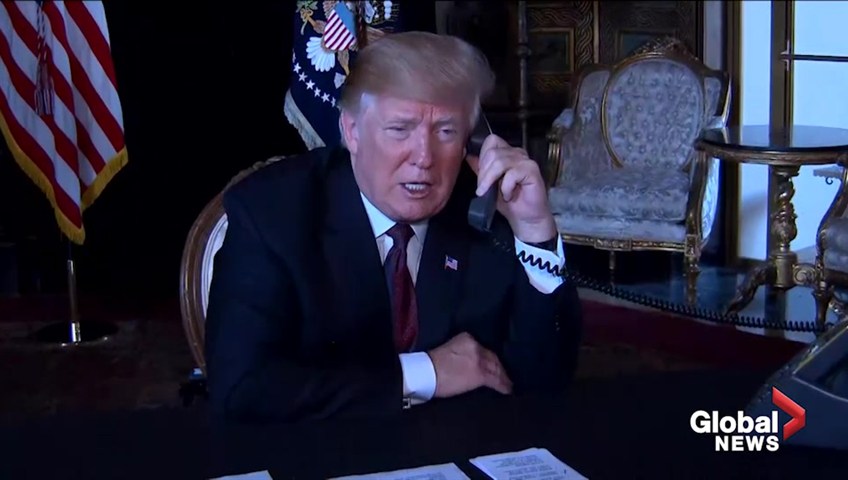
What Trump ‘Closing the Border’ Might Actually Look Like
November 27, 2018On Sunday, the world turned its eyes to Tijuana, Mexico, where clashes between US Border Patrol and Central American migrants protesting for asylum rights ended with agents firing tear gas into a crowd that included children. The widely condemned decision has since been defended by the Trump administration as a countermeasure against “lawlessness.” But the tear-gassing—and resulting viral photo—attracted an outpouring of empathy, grief, rage, and debate, while pointing to the larger conditions that led to the protest: The US is doing a terrible job processing people fleeing persecution in their home countries.
Some asylum seekers living in the US have waited years for their cases to be resolved. Migrants desperate for asylum have waited days in horrible conditions at the southern border just for the chance to plead their cases to US officials at "ports of entry." In response, the Trump administration has moved to speed the hiring of new immigration judges, but has also tried to make seeking asylum harder. Earlier this month, a federal judge temporarily halted the enforcement of an executive order that would have blocked people making asylum claims if they didn't legally pass through designated ports of entry. And on Monday, Donald Trump threatened on Twitter to "close the Border permanently" if Mexico didn't send migrants back home, complicating matters for country's incoming leftist government, which will have to figure out what to do with the migrants.
As usual, Trump is using the border as an opportunity to grandstand and bluster, but the underlying problem of migrants fleeing instability and violence in countries like Guatemala, Honduras, and El Salvador—some of which has been stoked by US foreign policy—isn't going away. For some perspective about what could be done to confront these problems, and what Trump means by "close the border," I called up Kristie De Peña, the director of immigration policy and senior counsel at the Niskanen Center, a left-libertarian think tank.
VICE: Trump says a lot of things and it's not clear what he means. What do you take "closing the border" to mean when Trump says it?
Kristie De Peña: I won't even venture to guess what he actually does mean, but there are a couple of things that it could mean. He could try to close some of the ports of entry until they are better staffed and they can take in more asylum applicants. He could send the military in an advisory capacity and they could arguably deter people from going to the border. What I suspect he probably means is that he wants to use the authority that he used for the travel ban—his broad authority that is in the Immigration and Nationality Act, section 212(f), to try to ban the entry of anyone seeking asylum on the US Mexico border.
Can he even do that, legally?
The language in that 212(f) authority is very, very deferential. The president has very broad authority to ban the entrance of aliens or a class of aliens in this case—I would suspect that class would be asylum seekers—if he finds that they would be detrimental to the interest of the United States. And that's an authority that's been used by many presidents in the past in different capacities. There's a huge but: In crafting the statutory provisions that govern asylum, Congress really took care to ensure that non-citizens within our country or at the border would be able to apply for asylum regardless of how they are entering, whether it is through a port of entry or crossing over our borders. Congress didn't intend for the president to be able to shut down an opportunity to seek asylum and Congress also didn't intend to limit the ability of someone to claim asylum based on their manner of entry.
Legalities aside, let's assume that Trump does close these ports of entry and that policy is allowed to stand for at least a period of time. What would the consequences be for the people who are traveling through Mexico and trying to seek asylum in the US?
It's a big question mark. Right now Mexico is allowing a lot of asylum seekers to wait in Mexico, and it's not just the Mexican government—the cartels are also allowing groups of people to cross through territory, but that may not be sustainable. That means that these groups of people are going to be in potentially increasingly dangerous situations. And the Mexican government may change their mind when the new administration starts in a week or so. They may ask the United States for funding for these people, for food, for clothing, for shelter.
Outside of the potential impacts to the individuals, we also have to think about what the impact is to our own system here. We have a huge backlog of asylum cases. Allowing them to pile up at the border is not going to be very effective or efficient for us in the United States. This isn't going to be a sustainable solution to allow people to stay in Mexico. We really need to do a better job of managing the migration flows at our border. This is not an enforcement issue whatsoever. This is really a management and an organizational issue.
What are some constructive things Trump could do to help alleviate this problem?
In our immediate future, we need to bolster the availability of staff and personnel at our ports of entry in order to process all of these asylum claims in a much more orderly fashion. We shouldn't have a backlog of people at our border. It's not safe for them, it's not safe for us, and it's not smart. So we should put some resources into bulking up the availability of asylum officers and caseworkers and supplies at the border so that we can effectively manage all of the people that are coming.
Longer-term, we need to do a better job at making the journey safe for people who are going to come to the United States but also help increase the safety that they should have in their homes, because ultimately most of them want to stay in their home countries if it's safe. We have to think about things like potentially processing people as refugees in their home countries if there's a way that we can do it that protects them from potential aggressors when they're there. More long-term than that, we have to think about our counter-narcotics policies, more effective ways to capture and punish traffickers. We have to increase our aid to some of the Northern Triangle countries and better loop in a lot of the NGOs that are working in those areas to ensure that the resources that we're giving are going to the people that need them.
That's a pretty long list of policies. Of those, which do you expect the Trump administration could actually do?
I think the personnel issue at the border is something that the Trump administration can certainly do. They are increasing the number of immigration judges that we have, and that's critical to dealing with a backlog that exists now. I think the Trump administration will also likely have to do something whether they want to or not—and that's work with the Mexican government, either on the policy of allowing asylum seekers to remain in Mexico or potentially exploring safe third-country options.
A safe third country agreement would mean that Central American migrants would have to apply for asylum in Mexico rather than traveling through Mexico to the US. I think intuitively a lot of people are like, "Well, why can't these people from Central America just stay in Mexico?" What do you think of that?
Unfortunately, safe third countries have to meet a number of safety and security thresholds, and right now, Mexico isn't able to meet those thresholds. That's not to say that they won't, it's not to say that they can't, but right now they're not doing it. A lot of advocates—us included—are pretty nervous about suggesting that they try and rush that process too much, But at least in the meantime, we should be encouraging the Mexican government to work with the NGOs there because they have close ties with a lot of the NGOs and Northern Triangle countries. They've had some good outcomes so far. A lot of Guatemalans have decided to stay in Mexico. The Mexican culture is a little bit more similar to theirs and a lot of the indigenous populations have friends and family in Mexico, so they're a little bit more comfortable staying there.
But the same isn't true of Honduras and El Salvador, and as we see more people leaving Venezuela as well, Mexico is a completely different place from their home countries. Until we can bolster some of the protections in Mexico, making them a safe third country really isn't an immediate solution. Potentially, it's a long-term solution.
Many people have said Trump moving troops to the border before the midterms was a political stunt. Are you worried about him doing a similarly drastic stunt in the run-up to the 2020 election, something that's bad policy but, in his mind, good politics?
I certainly don't think that that is out of the realm of possibility. Clearly Operation Faithful Patriot was a political stunt. Those military officials on the border who had to miss Thanksgiving, they didn't do anything. And I think that painting asylum seekers as this horde of people trying to invade the United States can't possibly be conceived as anything other than a political stunt.
I think it's really important for the media to emphasize that this is not a crisis, this is not an emergency, and to not let the president get away with some of those political stunts in the way that we have in the past.
This interview has been edited for length and clarity.
Follow Harry Cheadle on Twitter.


